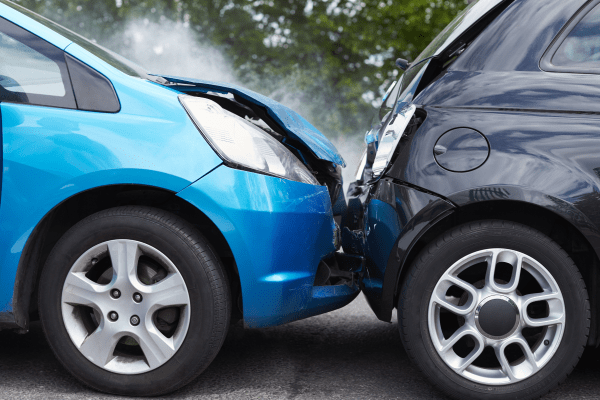Rear-end collisions are frequently viewed as minor incidents that tend to occur during stop-and-go traffic or in crowded parking lots. These accidents, though seemingly insignificant, can have more profound and often hidden consequences than meets the eye. In this article, we will explore the lesser-known and often unappreciated effects of rear-end collisions, shedding light on why they shouldn’t be underestimated.
The Deceptive Nature of Rear-End Collisions
At first glance, rear-end collisions may appear as minor accidents that result in little more than dented bumpers and inconvenience. However, the deceptive nature of these incidents lies in the fact that what you see on the surface can be just the tip of the iceberg. Often dismissed as inconsequential, these accidents can have far-reaching and often hidden impacts, both in terms of your vehicle’s condition and your well-being.
Whiplash and Personal Injuries
One of the most common and potentially severe consequences of a rear-end collision is whiplash. This injury occurs when the head is abruptly jerked forward and then backward upon impact. It can lead to a range of symptoms, including neck pain, headaches, dizziness, and even cognitive issues. Whiplash can be a debilitating condition that affects the victim’s ability to work, drive, or engage in everyday activities.
Trunk Troubles: Aftershocks of Rear-End Collisions
In the aftermath of a rear-end collision, various trunk-related issues can emerge, many of which go unnoticed until they manifest as significant problems:
- Unintentional Trunk Opening: The impact from a rear-end collision can cause the trunk to unexpectedly pop open, even when you haven’t pressed the release button. This can be dangerous when driving at high speeds on highways or busy roads, as items in the trunk can spill onto the road or obstruct your rearview, posing a significant safety risk.
- Insecure Locking Mechanism: A compromised locking mechanism may result from the impact, rendering your trunk unsecured. This leaves your vehicle vulnerable to theft or damage when parked, as potential thieves can easily access your trunk.
- Moisture Infiltration: Damage to the moisture seal can allow water to seep into the trunk. Over time, this can lead to mold growth, corrosion, and damage to your belongings.
- Difficulty in Opening: Rear-end collisions can lead to trunk mechanisms getting jammed or damaged, making it challenging to open the trunk, which can be inconvenient, especially when you need quick access to items stored in your trunk.
- Wheel Woes: Alignment and More
Rear-end collisions can lead to alignment issues in your vehicle, manifesting as:
- Uneven Driving: Following a collision, your car may drive unevenly on the road. This can be particularly problematic when making turns or navigating winding roads, as the unevenness can make steering more challenging.
- Unsteady Steering: The impact can cause your steering wheel to feel wobbly, reducing your ability to maintain control while driving, which can be both discomforting and unsafe.
- Vibrations Through the Steering Wheel: Vibrations originating from the collision can transmit through the steering wheel, affecting your driving experience. These vibrations can cause discomfort and may be an indicator of underlying issues.
- Tire Wear: Rear-end collisions can result in premature and uneven tire wear. This means that you may need to replace your tires sooner than expected, incurring unexpected expenses.
Electrical Quandaries: Silent Culprits of Rear-End Collisions
Even low impact rear-end collisions can compromise various electrical systems in your car. Loose or damaged wire connections can lead to a range of electrical issues, including:
- Speaker Malfunctions: The impact can cause wire connections to become loose or damaged, resulting in inconsistent or non-working speakers. This diminishes your audio experience and can be frustrating, especially for music or podcast enthusiasts.
- Lighting Issues: The collision can disrupt the electrical connections related to your car’s lighting system. This can lead to non-functional brake lights and taillights, compromising your safety on the road.
- Dead Battery: Electrical connections in the battery system can be disrupted, resulting in a dead battery. This sudden failure can leave you stranded and necessitate a jumpstart or replacement.
Frame Fractures: A Hidden Menace
The plastic bumpers on your car can easily sustain damage in a rear-end collision. When the bumper is compromised, the impact may extend to the car’s frame, leading to several problems:
- Frame Bending: Even minor accidents can cause slight frame bending. If left unaddressed, this can result in costly repairs. A compromised frame can lead to a range of issues, including less frame strength and possible damage in future collisions.
- Sensor Interference: Frame damage can interfere with the vehicle’s warning system sensors. This can result in faulty warnings or a lack of response to impending hazards, jeopardizing your safety on the road.
In conclusion, rear-end collisions, despite their common perception as minor incidents, can unveil a host of hidden problems. Whiplash and personal injuries can have a lasting impact on your well-being, while trunk troubles, alignment issues, electrical complications, and frame damage can affect your vehicle’s condition and safety. It’s crucial not to underestimate the consequences of a rear-end collision, as the unseen problems they cause can be far-reaching and costly if left unattended. Prompt attention to these issues is essential for ensuring both your well-being and the optimal functioning of your vehicle.

